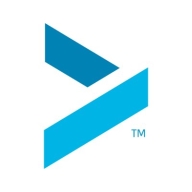

Find out what your peers are saying about Sonar, Veracode, Checkmarx and others in Application Security Tools.

Cequence, a pioneer in API security and bot management, is the only solution that delivers Unified API Protection (UAP), uniting discovery, compliance, and protection across all internal, external, third-party APIs to defend organizations against attacks, business logic abuse, and fraud. Needing less than 15 minutes to onboard an API without requiring any instrumentation, SDK, or JavaScript integration, the flexible deployment model supports SaaS, on-premises, and hybrid installations. Cequence solutions scale to handle the most demanding government, Fortune and Global 500 organizations, securing more than 8 billion daily API interactions and protecting more than 3 billion user accounts.
The Cequence Unified API Protection (UAP) platform enables security teams to manage through the entire API protection lifecycle that includes support for discover, comply, and protect stages that defend against attackers and eliminates unknown and unmitigated API security risks. The Cequence UAP platform provides three integral components, API Spyder, API Sentinel, and API Spartan that target every stage of the API protection lifecycle, ensuring that customers have one platform to address all their API security issues.
API Spyder (Discover)
Cequence UAP starts with first understanding your API attack surface through API Spyder which discovers your external APIs across managed and unmanaged API infrastructure. This allows security teams to ensure that unmanaged APIs are brought under management to confirm they do not have security risks and have the proper API protection enabled. Once deployed, API Spyder provides a continuous mechanism to surface unmanaged shadow APIs that are newly implemented by internal departments but never notify the security team of their existence.
API Sentinel (Comply)
API Sentinel, a security posture management product enables security teams and development teams to work collaboratively to directly address surfaced security issues within your runtime APIs that could potentially lead to an API exploit. It can discover whether your APIs conform to Open API specifications, adhere to security and governance best practices, and test your pre-production APIs for vulnerabilities. API Sentinel lays the groundwork to ensure that you are fully aware of the risks inherent in your API applications and enables you to remediate critical security issues before they are exploited by an attacker.
Spartan (Protect)
Finally, API Spartan offers real-time detection and mitigation of automated threats and attacks, including those that are API-specific. Spartan is powered by an ML-based analytics engine that can determine in real time if application transactions are from malicious or legitimate end users. It can mitigate a wide variety of cyberattacks that include online fraud, business logic attacks, exploits, automated bot activity, and OWASP API Security Top 10 attacks.
Mend.io is a software composition analysis tool that secures what developers create. The solution provides an automated reduction of the software attack surface, reduces developer burdens, and accelerates app delivery. Mend.io provides open-source analysis with its in-house and other multiple sources of software vulnerabilities. In addition, the solution offers license and policy violation alerts, has great pipeline integration, and, since it is a SaaS (software as a service), it doesn’t require you to physically maintain servers or data centers for any implementation. Not only does Mend.io reduce enterprise application security risk, it also helps developers meet deadlines faster.
Mend.io Features
Mend.io has many valuable key features. Some of the most useful ones include:
Mend.io Benefits
There are many benefits to implementing Mend.io. Some of the biggest advantages the solution offers include:
Reviews from Real Users
Below are some reviews and helpful feedback written by PeerSpot users currently using the Mend.io solution.
Jeffrey H., System Manager of Cloud Engineering at Common Spirit, says, “Finding vulnerabilities is pretty easy. Mend.io (formerly WhiteSource) does a great job of that and we had quite a few when we first put this in place. Mend.io does a very good job of finding the open-source, checking the versions, and making sure they're secure. They notify us of critical high, medium, and low impacts, and if anything is wrong. We find the product very easy to use and we use it as a core part of our strategy for scanning product code moving toward release.”
PeerSpot reviewer Ben D., Head of Software Engineering at a legal firm, mentions, “The way WhiteSource scans the code is great. It’s easy to identify and remediate open source vulnerabilities using this solution. WhiteSource helped reduce our mean time to resolution since we adopted the product. In terms of integration, it's pretty easy.”
An IT Service Manager at a wholesaler/distributor comments, “Mend.io provides threat detection and an excellent UI in a highly stable solution, with outstanding technical support.”
Another reviewer, Kevin D., Intramural OfficialIntramural at Northeastern University, states, "The vulnerability analysis is the best aspect of the solution."
We monitor all Application Security Tools reviews to prevent fraudulent reviews and keep review quality high. We do not post reviews by company employees or direct competitors. We validate each review for authenticity via cross-reference with LinkedIn, and personal follow-up with the reviewer when necessary.